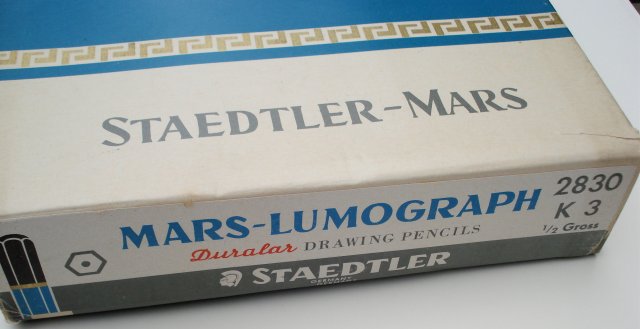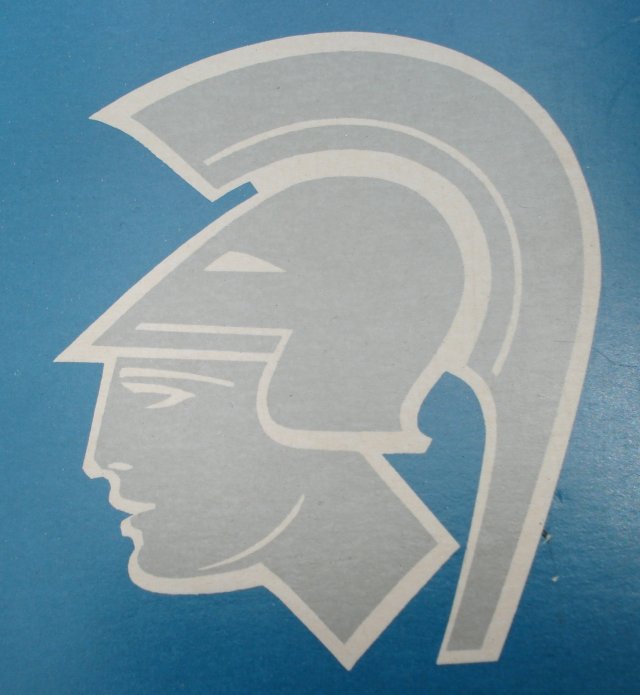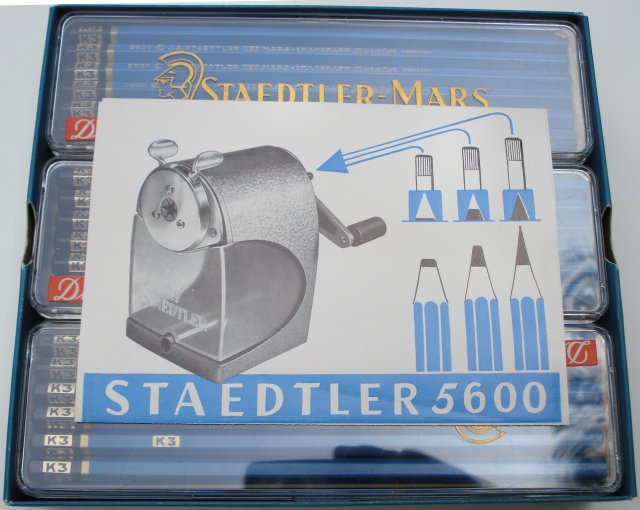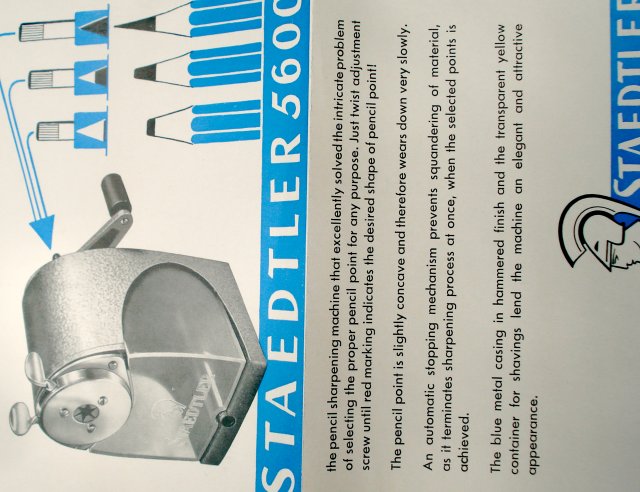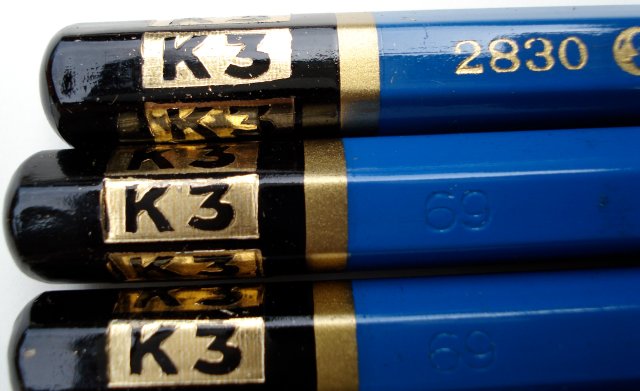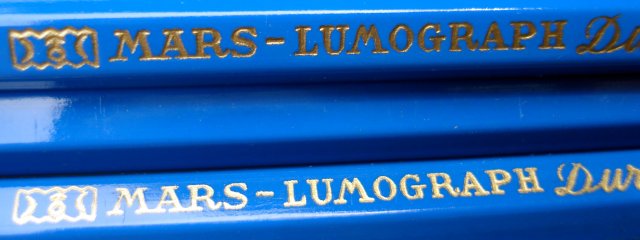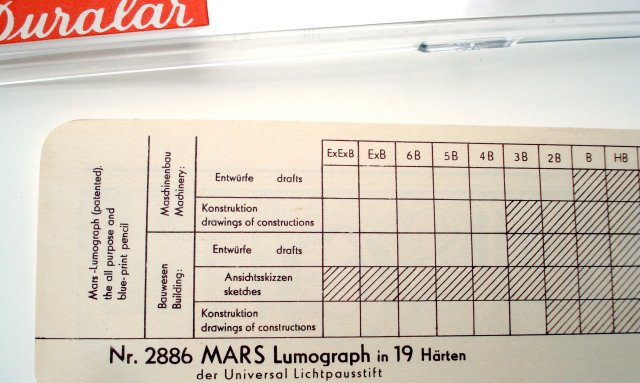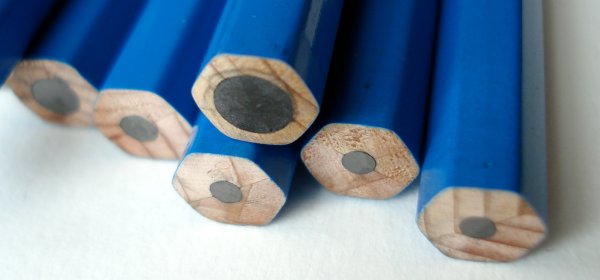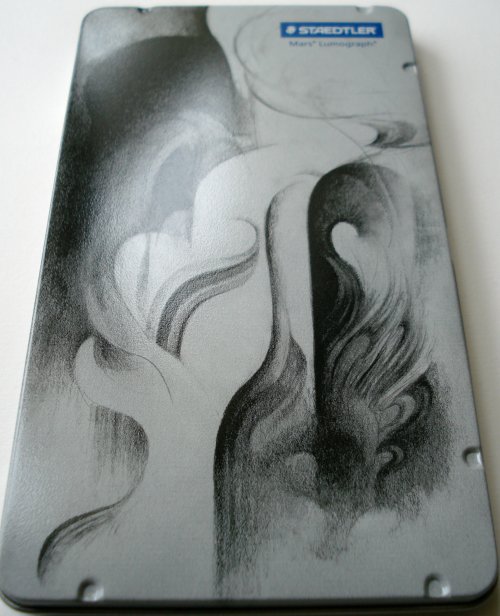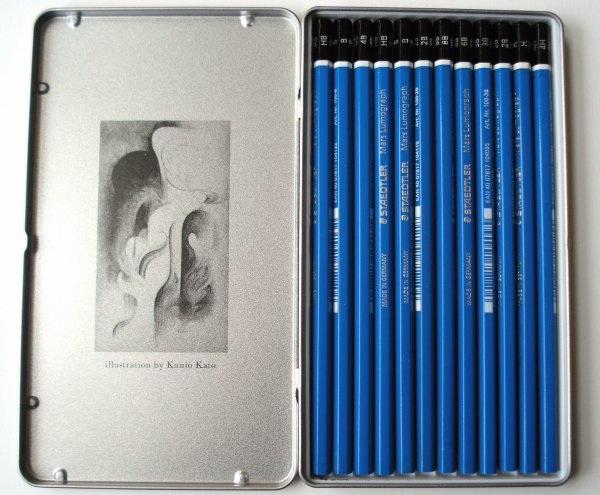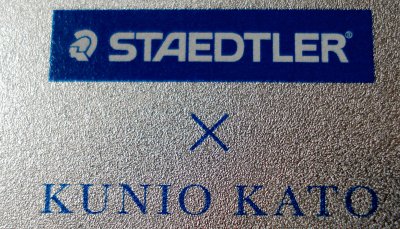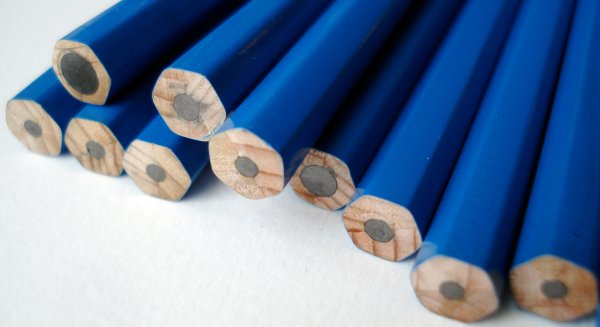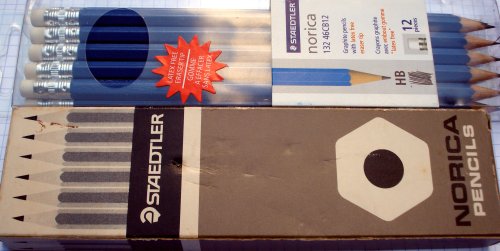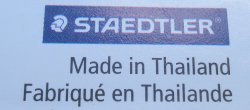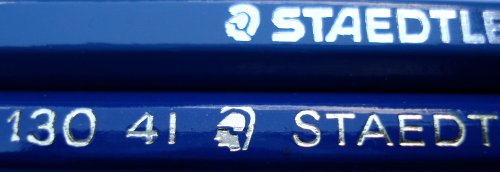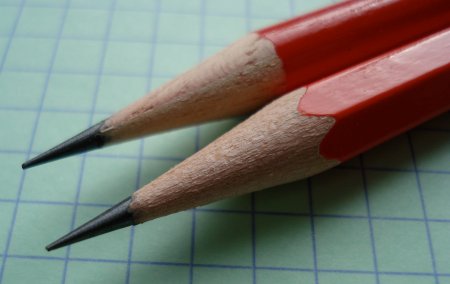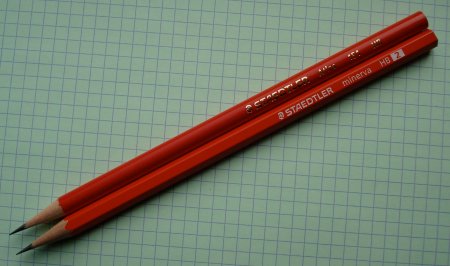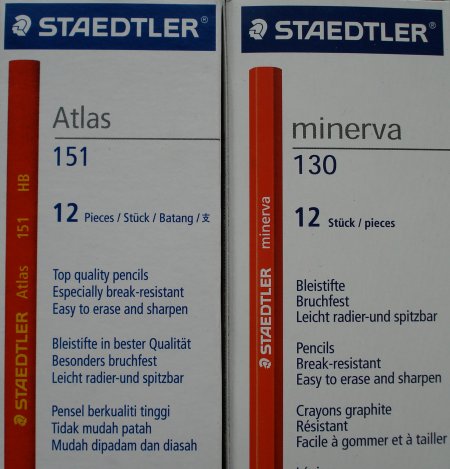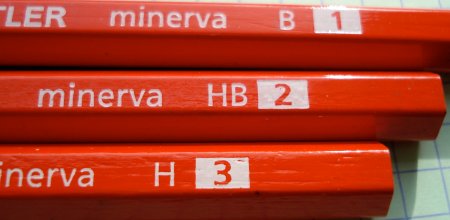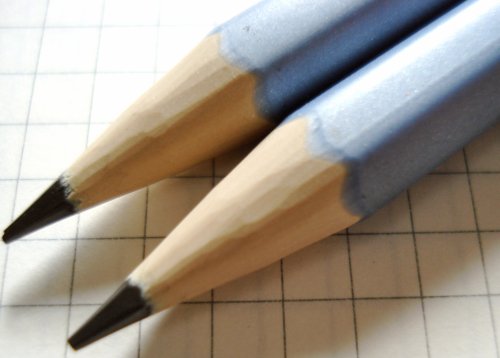
Almost a year ago, the 2009 Paperworld trade show saw industry giant Staedtler announce a new pencil technology called WOPEX (Wood Pencil Extrusion).
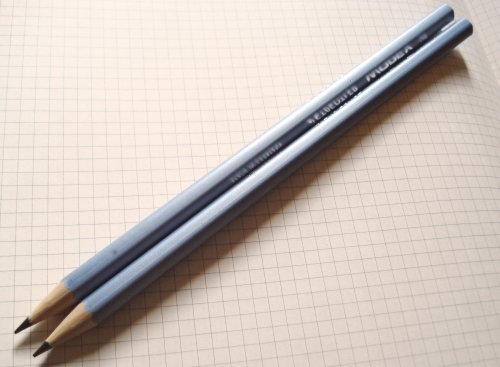
While neither extruded pencils nor reconstituted wood products are brand new, the combination certainly is, and being backed and promoted by Staedtler, the WOPEX may become a major development in pencil history.
Extruded pencils are of course not brand new.
In 1974, the former Empire Pencil Company of Shelbyville developed the EPCON plastic pencil.
In 1993, the former Conté created the Conté Evolution, an extruded plastic pencil that is popular in many markets today.
Last year, pencil talk took a look at the Conté Evolution Triangle pencil.
So let’s take a look at the WOPEX. My thanks to Gunther of Lexikaliker for sending me a few samples.
My experiments were done on a variety of commercial notebooks and with a Staedtler Mars plastic eraser.
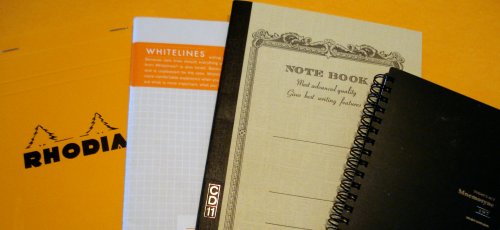
Exterior
The pencil has what I’d call a light metallic purple-blue finish. It seems to be a colour more likely to be seen on a car, and perhaps was meant to emphasize the high tech aspect of the pencil. The cap is unfinished.
The obverse reads in silver lettering:
Made in Germany Staedtler WOPEX HB
The reverse reads in black lettering:
EAN 40 07817 180006 Art. Nr. 180-HB 329 PEFC
The PEFC marks attests to an environmental certification.
Apart from the colour choice, there are three other things that really stand out.
First, the weight. It is definitey heavier than a traditional woodcase pencil. While a Staedtler Mars Lumograph weighs about 3.8g, the WOPEX is about 8.4g – more than twice as heavy!
Second, the surface has some sort of slightly rubberized grip. It is a different formula than an Ergosoft pencil. One thing about this surface type – after some sharpening, and being among other pencils and graphite dust, the pencil surface seemed to become noticably dirtier. The rubber surface does seem to absorb and retain graphite.
Third, the hexagonal shape is extremely rounded. While this is no doubt an ongoing industry trend, the WOPEX pencil seems to take it a step further.
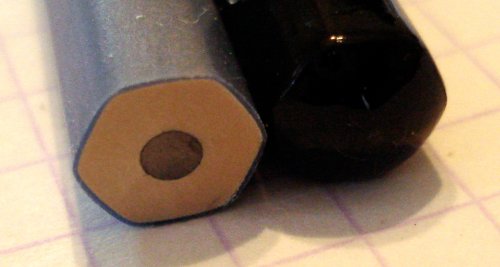
Writing
On paper, the lead seems waxier than that of a Mars Lumograph. Not nearly as waxy as a Blackwing (I tested), but enough that I’m sure it will receive a positive reception from many.
I had another sense that there was a “stay put”, non-smearing aspect to the lead. Apart from the case of using the pencil immediately after being sharpened, there appeared to be no graphite residue emitted by the pencil during use – the mark goes exactly where needed.
I’m not sure if the manufacturing process will eventually allow for a range of grades, but for home, school, and office use, it appears to be a very solid offering.
Sharpening
I did not test this pencil in my favourite sharpener (the CARL desktop models), but in a handheld sharpener, it appears to sharpen with not much more force than a woodcase pencil. The shavings of course are a bit different, having a rubbery feel. I also tried sandpaper, and had no problems.
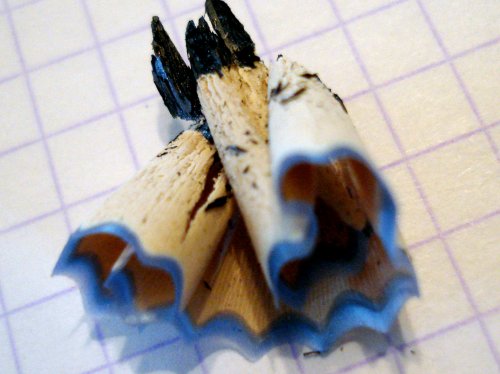
Erasure
The WOPEX lead mirrored the performance of the Lumograph’s – excellent erasure with a Staedtler Mars plastic on Rhodia paper, and slightly less so on the Apica, for example. The erasure is not a problem.
Conclusion
It is a viable pencil offering, and the pencil’s texture, shape, colour, and weight all proclaim that it is something new. When many pencil manufacturers are still using decades old machinery, along comes this major investment in modern technology.
Staedtler was no doubt aware of the challenges of creating a product like this, and have made it work. I really didn’t expect the WOPEX to perform so well.
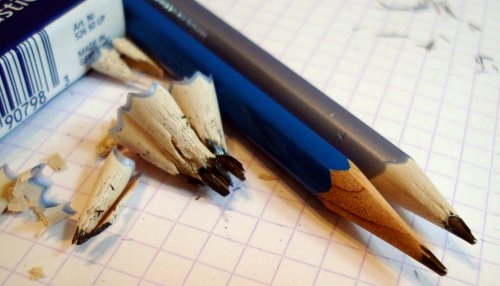
In the larger scheme, what does it mean? A few years ago, I would have thought that the WOPEX wasn’t really a pencil. But it looks and acts (though doesn’t smell) like a pencil, and is made by one of the world’s pre-eminent pencil manufacturers. Though made of wood, it doesn’t have that beautiful ‘clip-clop’ sound when dropped on the floor. And the manufacturing process conjures up images of scientists in lab coats rather than woodworkers.
Is it the future? The first woodcase pencils, before the Conté/Hardmuth graphite and clay blending process was invented, used raw graphite chunks. We don’t regret the advance that followed. Is the WOPEX the next leap forward?

